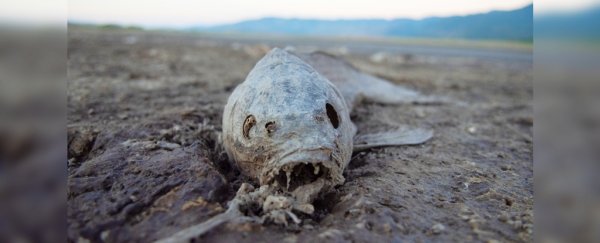The megadrought that has parched the southwestern United States and parts of Mexico over the last two decades is the worst to hit the region in at least 1,200 years, researchers said Monday.
Human-caused global heating accounts for more than 40 percent of the dry spell's intensity, they reported in the journal Nature Climate Change.
"The turn-of-the-21st-century drought would not be on a megadrought trajectory without anthropogenic climate change," lead author Park Williams, an associate professor at the University of California in Los Angeles, and colleagues wrote.
Over the last decade, California and other western states have experienced severe water shortages, triggering periodic restrictions on water usage and forcing some communities to import bottled water for drinking.
Occasional heavy snow or rainfall have not been enough to compensate.
2021 was especially dry. As of February 10, 95 percent of western US had drought conditions, according to the US government's Drought Monitor.
Last summer, two of North America's largest reservoirs – Lake Mead and Lake Powell – reached their lowest recorded level in more than a century.
The odds are high that the current dry spell will continue for at least a couple of years, probably longer, according to the findings.
Running simulations based on soil moisture records stretching back 1,200 years, the researchers calculated a 94 percent chance that the drought would extend through 2022.
There's a three-in-four chance it will run until the end of decade.
Tree-ring analysis shows that the area west of the Rocky Mountains from southern Montana to northern Mexico was hit repeatedly by so-called megadroughts – lasting at least 19 years – between the years 800 and 1600.
Chronic water scarcity
Earlier research had established that the period 2000-2018 was likely the second worst drought since the year 800, topped by one in the late 1500s.
Data from 2019-2021, backed by new climate models released last year, have revealed the current drought to be worse than any from the Middle Ages.
But without climate change it "wouldn't hold a candle to the megadroughts of the 1500s, 1200s or 1100s," Williams said in a statement.
Western North America is not the only region hit by increasingly severe dry periods.
Climate change worsened the El Nino-driven droughts of 2015-2016, leading to widespread crop failures, loss of livestock, Rift Valley fever outbreaks, and increased rates of malnutrition.
Globally, 800 million to 3 billion people are projected to experience chronic water scarcity due to drought caused by 2 degrees Celsius warming above preindustrial levels, according to a draft 4,000-page Intergovernmental Panel on Climate Change (IPCC) report on climate impacts seen by AFP.
In a 4C world, that figure is up to 4 billion people.
Earth's surface has already warmed 1.1C on average, and is almost certain to breach the 1.5C cap called for in the Paris Agreement within two decades.
Other natural extreme weather events enhanced by global warming include deadly heatwaves, flood-causing rainfall, and superstorms.
